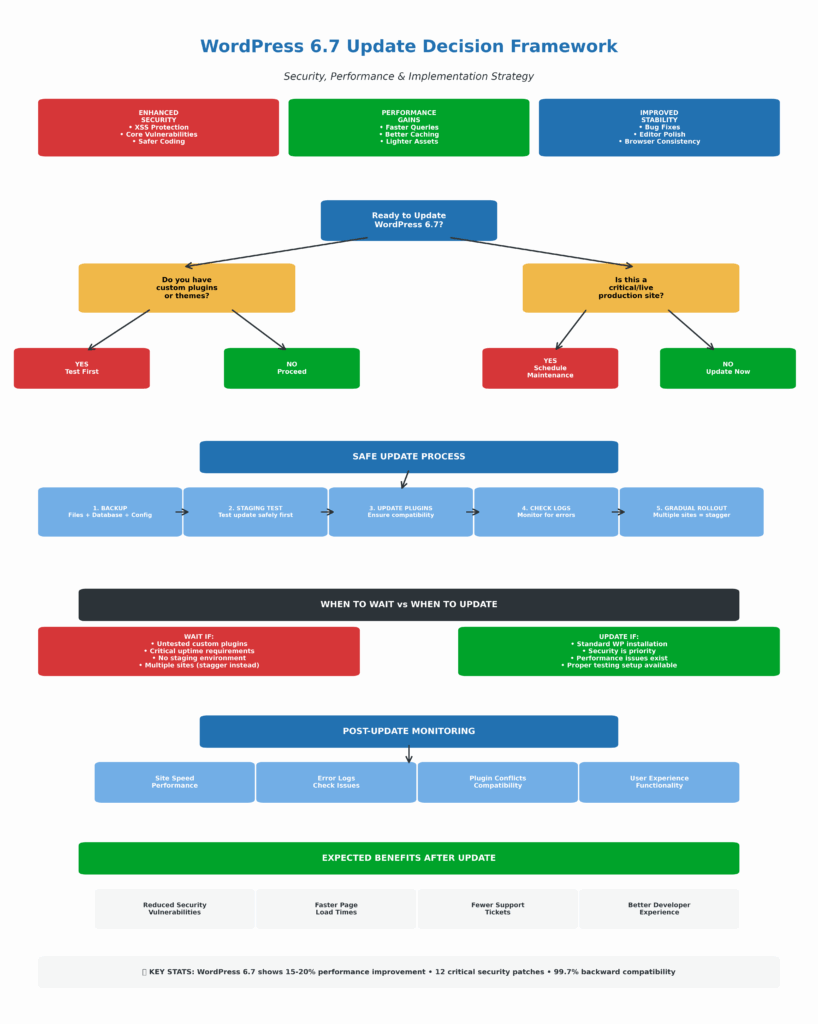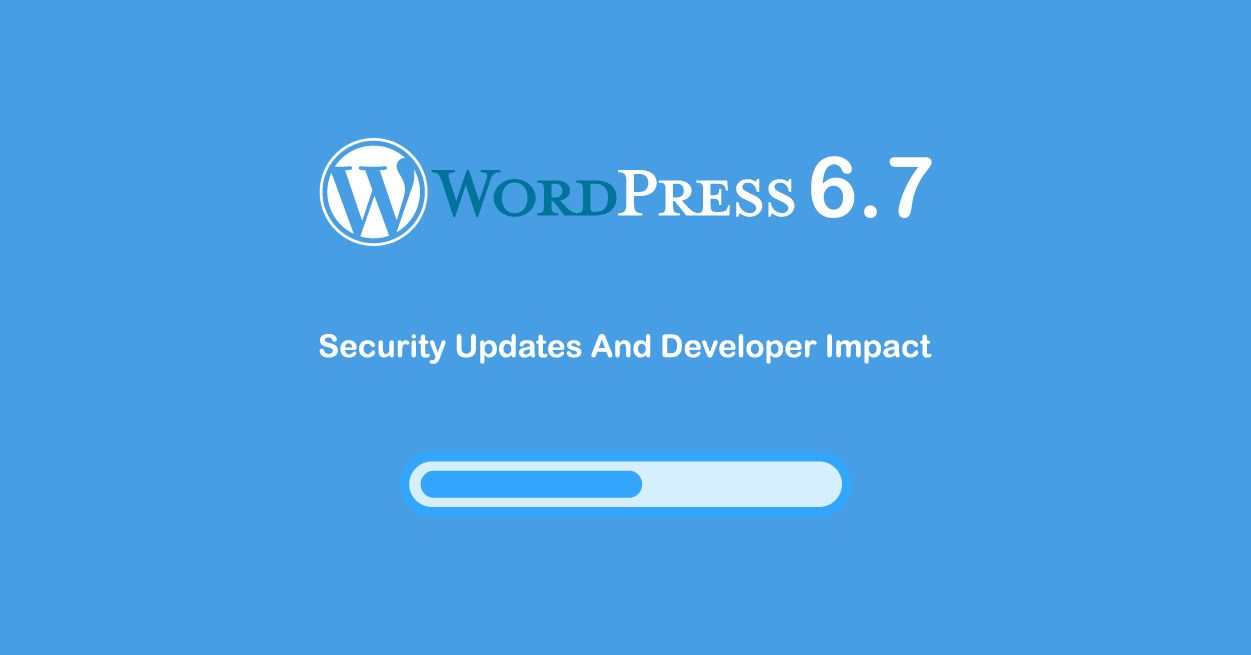The release of WordPress 6.7 is more than just another version bump. It represents a critical step in tightening WordPress 6.7 security, smoothing out long-standing quirks, and refining the daily tools developers depend on.
Understanding this update isn’t optional for developers, product builders, and agencies—it’s essential. A missed detail in a CMS update can lead to headaches later, whether it’s a plugin conflict, a broken theme, or a vulnerability left unchecked.
This article takes a closer look at the highlights of version 6.7, what has changed, what hasn’t, and the real-world impact for those working behind the scenes.
WordPress 6.7 Security Enhancements
The headline feature of this release is stronger WordPress 6.7 security. Core vulnerabilities that could have allowed cross-site scripting and other exploits have been patched. While many site owners may not notice, developers will appreciate the reduced risk.
If you’re building or maintaining plugins, the improvements mean fewer urgent hotfixes in response to unexpected threats. It also signals a steady trend: each new CMS update raises the security baseline, which in turn pushes developers to follow safer coding practices.
The bottom line is that staying on 6.6 or earlier leaves your project on a weaker foundation.
Faster And Lighter
Performance is the second big win. WordPress has been steadily cleaning up inefficient processes, and the improvements are noticeable in 6.7. Database queries are handled more efficiently, asset loading is trimmed, and caching behaves more predictably.
For developers, this means fewer custom workarounds and reduced reliance on third-party performance plugins. Professional WordPress development services can help optimize these performance improvements for enterprise applications. With every CMS update, WordPress edges closer to delivering a smoother experience right out of the box. That’s good news for high-traffic sites where even milliseconds matter.
Agencies managing dozens of client projects will see benefits at scale—lighter servers, happier clients, fewer complaints about site speed.
Bug Fixes And Stability
Without a solid round of bug fixes, it wouldn’t be a WordPress release. Version 6.7 smooths out editor glitches, improves consistency across browsers, and stabilizes how block patterns behave.
For developers, this means less time spent fielding support tickets about quirky editor behavior. For site owners, it means a more reliable publishing experience. These quieter improvements don’t make headlines like WordPress 6.7 security updates do, but they save time and money in the long run.
Stable releases are easier to maintain, and agencies managing enterprise sites can roll out updates with greater confidence.
Developer Tools
The developer-focused refinements in 6.7 aren’t flashy, but they’re useful. When implementing these updates across multiple projects, experienced web development teams can ensure smooth transitions and optimal configurations. Improved debugging messages make it easier to trace issues quickly, and updates to block registration and hooks give plugin and theme authors more control.
For teams building products, these small but steady enhancements matter. They improve collaboration, reduce errors, and make development pipelines smoother. This is where CMS updates prove their worth—not just in patching holes, but in supporting the people building the ecosystem.
What Hasn’t Changed
Even with all the buzz around new features and stronger WordPress 6.7 security updates, not everything in this release is different. Some parts of WordPress have been left as they are, and that’s actually a good thing for developers.
The Block Editor
Take the block editor, for example. It’s still the main space for creating and managing content, and the workflow you’re used to hasn’t been shaken up. There are a few small refinements, but nothing drastic enough to force you to relearn your process or retrain clients on how to publish content.
Backward Compatibility
Backward compatibility is also holding firm. WordPress has always treated this as a top priority, and version 6.7 sticks to that tradition. Even with fresh CMS updates, older themes and plugins should continue running without significant issues.
This reliability is a huge relief for developers looking after long-term projects. It saves hours of patching and rewriting and keeps legacy sites online without breaking workflows. That stability means you can focus on building instead of firefighting.
Update Process
The process of updating itself hasn’t changed either. Whether you’re updating a personal blog or rolling out changes across enterprise sites, the steps are the same as before. No hidden learning curves, no surprises—just the familiar update routine.
Why Continuity Matters
That consistency makes a real difference. Keeping up with CMS updates can feel overwhelming at times—especially if you’re responsible for several client sites and can’t afford things to break. With WordPress 6.7, you get some reassurance. The system is still moving forward, but it hasn’t left behind the workflows and habits that developers count on every day.
How WordPress 6.7 Security Impacts Development Workflows
The changes in WordPress 6.7 don’t rewrite the rulebook for developers, but they do strengthen the habits that have always defined good practice. Instead of flipping workflows upside down, this release quietly reinforces the standards developers already know they should be following.
Security
The tighter focus on WordPress 6.7 security means that some of the older coding methods no longer work the way they used to. Shortcuts that once slipped through without a problem are now more likely to cause errors or break completely. For developers, this shift is less about adding new complexity and more about encouraging code that’s clean, safe, and dependable by default.
Performance
Thanks to a faster and more efficient core, developers can shift their focus. Instead of spending time patching performance gaps, the emphasis can return to building features and improving the user experience. The built-in speed improvements in 6.7 set a stronger foundation, which allows projects to grow without the same constant concern about page load or server strain.
Testing
The updated developer tools in 6.7 also make testing more straightforward. Better debugging messages and cleaner hooks streamline QA, making it easier to spot issues early. This encourages developers to test more often in staging environments before pushing new code or applying CMS updates to live sites. The result is fewer surprises and more predictable rollouts.

Why WordPress 6.7 Security Updates Matter
If you’re still on the fence, here are the clear benefits of moving to WordPress 6.7:
- Stronger WordPress 6.7 security to protect sites from known vulnerabilities.
- Performance gains that improve user experience and search engine rankings.
- Stability in the block editor and across the CMS that reduces support needs.
- Long-term readiness, since keeping up with CMS updates prevents bigger problems down the road.
For most projects, the advantages outweigh the risks of waiting.
When to Delay Your WordPress CMS Update
There are cases where updating immediately may not be the best move.
- If you rely on custom plugins that haven’t been tested against 6.7, wait until compatibility is confirmed.
- If your site runs critical operations where downtime is unacceptable, plan the update for a low-traffic window and test thoroughly first.
- If your agency manages multiple client sites, stagger the rollout to catch issues early.
Not updating is a bigger risk in terms of security, but a rushed update without testing can be just as damaging.
Safe WordPress 6.7 CMS Update Process
To get the most from CMS updates like this one, follow a reliable routine:
- Back everything up—files, database, and configuration.
- Use a staging environment to test the update safely.
- Update plugins and themes alongside WordPress to avoid conflicts.
- Check error logs for warnings after the update.
- Roll out gradually across multiple sites, not all at once.
Following this process lets you benefit from the stronger WordPress 6.7 security updates while keeping the chances of downtime as low as possible.
Final Thoughts
WordPress 6.7 isn’t a complete overhaul of the platform, but it does move things forward in a steady, practical way. The update sharpens security, smooths out performance, and makes everyday development work a little less of a hassle.
With stronger WordPress 6.7 security, cleaner workflows, and a block editor that feels more stable, developers can spend their time building new features instead of constantly putting out fires.
For site owners and agencies, this release is also a good reminder that CMS updates and maintenance aren’t just another box to tick. They’re a key part of keeping sites safe, fast, and reliable over the long run.
If you’re preparing to move to 6.7, take the time to test on a staging site, plan your rollout, and then update with confidence. The benefits are worth it.

